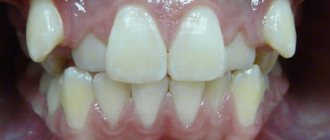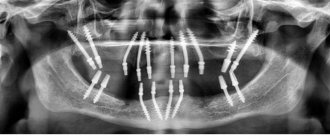What is vaginal candidiasis? Causes of the disease
Vaginal candidiasis is an inflammatory disease of the genitourinary tract caused by yeast-like fungi of the genus Candida.
In most cases, the cause of vaginal candidiasis is Candida Albicans. It can reproduce successfully in an oxygen-free environment and grows especially well on tissues that contain large amounts of glycogen, including the mucous membrane of the female genitalia. Recently, doctors are increasingly discovering other pathogens of the Candida genus, but the overall frequency of their occurrence does not exceed 15-30%.
Internal risk factors for the development of vaginal candidiasis include endocrine diseases (diabetes mellitus, obesity, thyroid pathology, etc.), underlying gynecological diseases, disorders of local immunity; to external risk factors - taking antibacterial, glucocorticosteroid, cytostatic drugs, immunosuppressants, radiation therapy; wearing tight clothing, underwear made of synthetic fabrics, regular use of sanitary pads, prolonged use of intrauterine devices, vaginal diaphragms, douching, use of spermicides.
Etiology of VK
Candida spp., the causative agents of vaginal candidiasis, are opportunistic fungi that are the most common cause of fungal infections in humans. The genus Candida has about twenty species. As a rule, BK is associated with one species of Candida, but there is a probability (2-5%) of simultaneous infection with two or more species.
In Russia, the USA, Australia and Europe, Candida albicans is most often detected in women with VK (76-89%). It is followed by C. glabrata (7-16%). The percentage of non-albicans Candida ranges from 11 to 24%. Some studies have shown a trend toward an increase in the incidence of non-albicans candidiasis, but recent work by scientists in the United States involving ninety thousand samples refuted this assertion: the proportion of Candida species causing BK remained virtually unchanged from 2003 to 2007.
Etiologically, various candidiasis are clinically very similar, however, atypical pathogens are characterized by resistance to azole antimycotics. C. glabrata and C. krusei are more resistant to azole antifungal drugs than others.
CC dossier
Marina Pozdeeva
pharmacist of the first category and head of the pharmacy. Author of numerous works on pharmacology and pharmacotherapy, Dnepropetrovsk.
These data highlight the importance of identifying Candida spp. in women with a high risk of developing non-Candida albicans-associated VK in order to select effective therapy for the disease.
Symptoms of vaginal candidiasis
Classic signs of vaginal candidiasis are:
- itching and burning in the vagina and in the external genital area;
- specific discharge resembling cottage cheese;
- pain and burning when urinating;
- discomfort and pain during sexual intercourse.
As a rule, discomfort intensifies in the afternoon, and in some women before menstruation. During a gynecological examination, the doctor detects swelling and redness of the mucous membrane of the genital tract, as well as specific white or yellowish-white cheesy thick vaginal discharge.
With a complicated course of the disease, cracks appear on the skin of the vulva and mucous membranes, posterior commissure and peranal area; with recurrent candidal vulvovaginitis, dryness, atrophy, lichenification in the affected area, and scanty whitish vaginal discharge are expressed.
Make an appointment
Classification
There are several types of classification of vaginal candidiasis. Depending on the characteristics of the course, acute and chronic (recurrent) forms of the disease are distinguished. In the first case, the pathology is characterized by vivid symptoms and occurs no more than four times a year. With chronicity, the symptoms are usually less pronounced, and the disease itself recurs 4 times a year or more often.
Depending on the presence of complications, uncomplicated and complicated vaginal candidiasis is distinguished. In the first case, the process is relatively easy and can be stopped quite quickly with the selection of adequate therapy. As a rule, it occurs in women who do not have additional risk factors (diabetes mellitus, immunodeficiency states of various origins).
The complicated form of vaginal candidiasis is characterized by pronounced symptoms that negatively affect the patient’s daily life. As a rule, inflammation spreads to the external genitalia, causing the appearance of ulcers and cracks. This form often recurs.
Localization of the pathological process allows us to distinguish three forms of the disease:
- vaginitis: inflammation affects only the vaginal mucosa;
- vulvovaginitis: the external genitalia and vagina are affected;
- cervicitis: the cervix is involved in the process.
Complications
Most complications of vaginal candidiasis are associated with the spread of the inflammatory process to nearby organs and tissues and the addition of bacterial inflammation. It occurs against the background of a sharp decrease in local immunity. Most often, patients encounter the following problems:
- salpingitis and salpingo-oophoritis (adnexitis): inflammation of the uterine appendages: tubes and ovaries; the process can be unilateral or bilateral, accompanied by pain in the lower abdomen, weakness, fever; without treatment, it can cause infertility due to the development of adhesions;
- urethritis: inflammation of the urethra; classic symptoms are a burning sensation when urinating, changes in the appearance and color of urine, redness and swelling in the area of the external urethral meatus;
- cystitis: inflammation of the bladder that develops as a result of the passage of the pathogen from the urethra; Symptoms of urethritis include frequent urination with a small amount of urine, pain and cramping at the end of the process, increased temperature and pain in the lower abdomen.
In addition to the spread of infection, vaginal candidiasis can threaten the development of stenosis (narrowing) of the vagina. This condition occurs due to chronic inflammation, which leads to the growth of scar tissue and narrowing of the lumen of the organ. This leads to significant difficulty in sexual life.
Vaginal candidiasis is very dangerous for pregnant women, since without treatment, infection of the fetus is possible, which can lead to its death.
In the postpartum period, women may develop candidal endometritis.
Diagnostics
Diagnosis of vaginal candidiasis begins with collecting complaints. The gynecologist clarifies what worries the patient, when and under what circumstances specific problems appeared, as well as what measures were taken to eliminate them and with what effect. Attention is paid to the medical history: previous diseases (inflammation of the urogenital tract, STDs are especially important), the number of pregnancies and births, the number of sexual partners, etc.
The next diagnostic stage is an examination in a gynecological chair, during which the doctor identifies characteristic changes: swelling, redness, discharge and plaque. When Lugol's solution is applied to tissues, white dots resembling semolina are visualized on them, which is a characteristic sign of the disease. To confirm the diagnosis, the doctor prescribes:
- microscopy of vaginal smears (during the process, spores and fungal cells are identified);
- culture of vaginal discharge;
- PCR and ELISA of the excreted to detect pathogen antigens;
- blood test: general (signs of an inflammatory process are detected), tests to detect antibodies to Candida - remove!
If necessary (for example, during a recurrent course of the disease), tests are carried out to identify risk factors: elevated blood glucose levels, immunodeficiency, etc.
Treatment of RVC caused by non-albicans Candida species
Non-albicans species respond very moderately to therapy with azole antimycotics. Therefore, the treatment regimen in such cases is selected individually, based on the severity of the disease and response to drugs.
Topical boric acid has been used to treat RVC for many decades. However, boric acid preparations can be absorbed through the vaginal mucosa into the blood and have a toxic effect. To avoid absorption, boric acid-based vaginal products are released in gelatin capsules. The recommended treatment regimen is one 600 mg capsule per day for two weeks.
There is no ready-made dosage form in Russia, but capsules can be prepared in pharmacies ex tempore. Studies have shown that treatment with vaginal boric acid capsules is effective in 70% of cases of C. glabrata-associated RVC.
An alternative to toxic boric acid is suppositories with amphotericin B. The antibiotic penetrates the cell membrane of the fungus and, by binding to ergosterol, destroys the cell wall. The course of treatment is 50 mg at night per os for two weeks. This treatment regimen is successful in 70% of patients suffering from disease caused by non-albicans species that are not amenable to azole therapy, especially C. glabrata.
Local preparations for vaginal use containing 17% flucytosine have also proven activity against non-albicans Candida species. Fungal cells absorb flucytosine, after which it is deaminated and converted into 5‑fluorouracil, which is incorporated into Candida DNA instead of uracil. As a result, protein synthesis is disrupted and the cell dies. A combination of 17% flucytosine cream and 3% amphotericin B cream is also possible. The average duration of treatment with flucytosine should be at least two weeks. The peculiarity of the drug is its high cost.
Treatment of vaginal candidiasis
Specific treatment aimed at eliminating vaginal candidiasis is carried out only after identifying the pathogen and if the patient has signs of the disease. The basis of therapy is specific antifungal agents: nystatin, clotrimazole, ketoconazole, fluconazole, nitrofungin and others. The specific drug, its dose, frequency of administration and course duration are selected individually depending on the characteristics of the course of the disease, the presence of concomitant pathologies and other factors.
If we are talking about an acute uncomplicated process, the drugs are prescribed in local form in the form of suppositories, vaginal tablets or creams. They are introduced directly into the genital tract, where they stop the active reproduction of the pathogen.
In the presence of complications, as well as in the chronic course of the disease, systemic drugs are used in the form of tablets for oral administration. The application regimen is selected on an individual basis.
Until the manifestations of vaginal candidiasis are completely eliminated, it is necessary to maintain sexual rest in order to minimize injury to the inflamed walls of the genital tract. In chronic cases, condoms must be used. The effectiveness of therapy is assessed 14 days after the start of treatment.
Make an appointment
Treatment of complicated RVC
The optimal course of treatment for complicated VK has not yet been precisely determined. Some studies have shown the effectiveness of antifungal suppressive therapy for several months.
The drug of choice for RVC is oral fluconazole. For severe recurrent VK, fluconazole is administered at a dose of 150 mg (three doses) every 72 hours for nine days, after which treatment is continued at 150 mg per week for a long time. This antifungal regimen significantly reduces the likelihood of relapse compared with three doses of fluconazole without maintenance treatment.
Long-term suppressive therapy with oral fluconazole is convenient and well tolerated compared with other antifungal agents. Studies have shown that the effectiveness of a suppressive treatment regimen for RVC reaches 90%. Contrary to expectations, the development of resistance to C. albicans or superinfection with non-albicans species was not confirmed in patients taking fluconazole for a long time. However, in patients with persistent infection, identification of the pathogen is recommended.
Other oral agents that have proven effective in the treatment of RVC can be used as drugs for suppressive therapy. The following are prescribed as alternative treatment regimens:
- ketoconazole 100 mg per day (due to the hepatotoxicity of oral ketoconazole, preference is usually given to other drugs);
- itraconazole 200 mg twice a day for one day every month;
- clotrimazole vaginal suppositories.
For women who prefer topical treatment, clotrimazole is recommended at a dosage of 500 mg per week or 200 mg twice a week. The use of other local antifungal drugs is also permissible, and it practically does not matter which active ingredient is used.
In patients with RVC who do not undergo maintenance therapy, the probability of relapse within six months after successful treatment of the next episode of the disease is 70%. The risk of relapse in women taking antimycotics as suppressive treatment is 40-50% within one year after stopping the drugs.
Prognosis and prevention
To completely cure vaginal candidiasis, it is necessary to both consult a doctor in a timely manner and follow all his recommendations. Antifungal drugs are sold in pharmacies without a prescription, but DIY in this case is not only ineffective, but also dangerous. Only a specialist can correctly select the necessary medications, determine the characteristics of their use, and also monitor the effect of the medications.
It is important to understand that it is much easier to prevent vaginal candidiasis than to treat it. To minimize the risk of developing the disease, you must adhere to the following rules:
- give preference to cotton underwear;
- stop using panty liners;
- use specialized products for genital hygiene;
- do not use douching without a doctor’s prescription;
- monitor the condition of the body, promptly treat pathologies of the genitourinary and digestive systems, endocrine glands;
- avoid casual sex and infection with sexually transmitted diseases;
- do not use antibiotics without a doctor’s prescription and do not change the dose and regimen without permission;
- if long-term antibiotic therapy is necessary, take antifungal agents.
Vaginal candidiasis is an unpleasant disease that can be prevented and, if necessary, quickly cured. The main thing is to consult a doctor in a timely manner and follow all his recommendations.
Bibliography
- Gynecology textbook. IV edition ed. Academician of the Russian Academy of Medical Sciences, Professor G.M. Savelyeva; prof. V.G. Breusenko 2012
- Urogenital candidiasis. Clinical recommendations. Moscow, 2016 – 22 p.
- Vulvovaginal candidiasis: pathogenesis, diagnosis and treatment tactics. Bayramova G.R., Amirkhanyan A.S., Chernova V.F. //Doctor.Ru 2018. No. 10 (154). pp. 32-36
- Sherry L., Kean R., McKloud E., O'Donnell LE, Metcalfe R., Jones BL et al. Biofilms formed by isolates from recurrent vulvovaginal candidiasis patients are heterogeneous and insensitive to fluconazole. Antimicrob. Agents. Chemother. 2017; 61(9): e01065-17
- Prilepskaya V.N. Vulvovaginal candidiasis. Clinic, diagnosis, principles of therapy: manual / V.N. Prilepskaya, G.R. Bayramova - M 2008 - 50s
- Atlas of pathogens of fungal infections/E.N. Moskvitina and others - Moscow GEOTAR-Media, 2022 208p
- Zordan R., Cormack B. Adgesis on opportunistic fungal pathogens In: Calderone RA, Clancy CJ, ed Candada and candidiasis/ Washington: ASM press; 2012: 243-259)
- Zhang Y., Li W., Chu M., Chen H., Yu H., Fang C. et al. The AAA AT Pase Vps4 plays important roles in Candida albicans hyphal formation and is inhibited by DBeQ. Mycopathology 2016; (5-6) 329-39
- Murciano C., Moyes DL, Runglall M., Yobouti P., Islam A., Hoyer LL et al. Evaluation of the role of Candida albicans agglutinin-like sequence (Als) proteins in human oral epithelial cell interactions. Plos one 2012.
- Center for Disease Control (CDC) Sexually Transmitted Disease Treatment Guidelines, 2015.
- Donders GG, Bellen G., Mendling W. Management of recurrent vulvovaginal candidosis as a chronic illness. Gynecol. Obstet. Invest 2010 70(4):306-21
- Ankirskaya A.S. Muravyova V.V. Microbiological characteristics of vaginal infections caused by fungi of the genus Candida // sexually transmitted diseases 2001. pp. 12-14
- Eschenbach DA Chronic vulvovaginal candidosis N Engl. J Med 2004; 351(9)
- Tikhomirov A.L. Oleinik Ch.G. Optimization of treatment of recurrent vulvovaginal candidiasis // effective therapy in obstetrics and gynecology. 2007 No. 3 from 22-27
- Bayramova G.R. Recurrent vaginal candidiasis. Clinic, diagnosis, treatment. dis. Doctor of Medical Sciences M. 2013 (46s)
- Prilepskaya V.N. Bayramova G.R. Vulvovaginal candidiasis, modern ways to solve the problem. Difficult patient 2006 (from 33-36)
Vulvovaginal candidiasis. Modern approaches to treatment
Tatyana Yu. Pestrikova Far Eastern State Medical University, Khabarovsk, Russia [email protected] Abstract
Despite the rapid development of the pharmaceutical industry and a huge amount of available antifungal medications, the problem of vulvovaginal candidiasis (VVC) treatment remains relevant.
Efforts should be made to raise awareness among gynecologists, urologists, and other specialists, regarding the sociomedical significance of VVC based on the literature analysis. The review provides data on etiopathogenesis, clinical features, diagnosis, and treatment of VVC. When writing the paper, the search for domestic and foreign publications of the past decade using Russian and international search engines (PubMed, eLibrary, etc.) was performed. The peer-reviewed papers were included in the review. Key words:
vulvovaginal candidiasis, Candida, antifungal medications, complications.
For citation:
Pestrikova T.Yu. Vulvovaginal candidiasis. Modern approaches to treatment. Clinical analysis in obstetrics, gynecology and reproductology. 2021; 1:25–28. DOI: 10.47407/kragr2021.1.1.00005
Vulvovaginal candidiasis (VVC) is an infectious lesion accompanied by inflammation of the vaginal mucosa, which is caused by fungi of the genus Candida. This disease is notable for the fact that Candida fungi normally live in a woman’s intestines and do not cause harm to health. But under certain conditions, Candida albicans fungi can replace the normal microflora of a woman’s vagina and cause candidal vaginitis/vulvitis [1–3]. Codes according to the International Classification of Diseases (ICD), 10th revision: • B37. Candidiasis. • B37.3. Candidiasis of the vulva and vagina. • B37.4. Candidiasis of other urogenital localizations. • B37.9. Candidiasis, unspecified [1, 4, 5].










